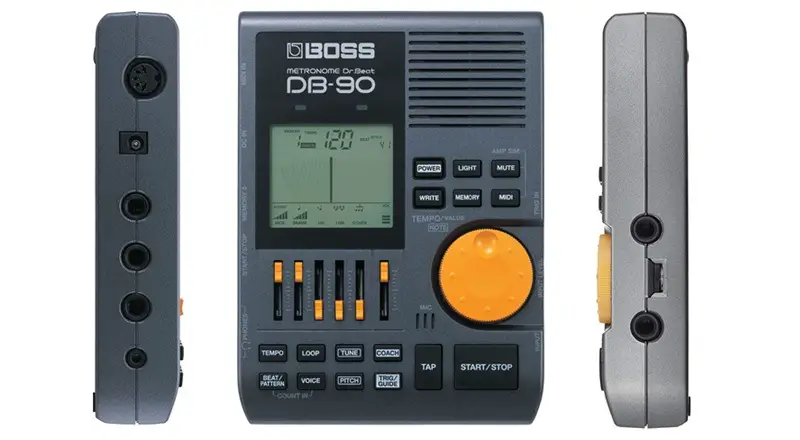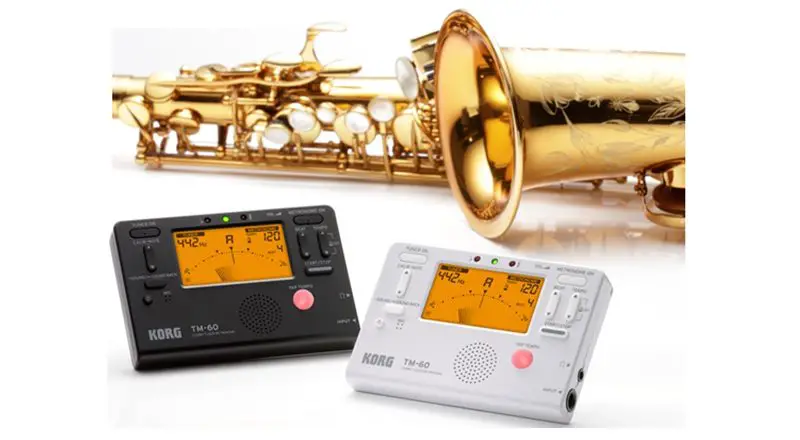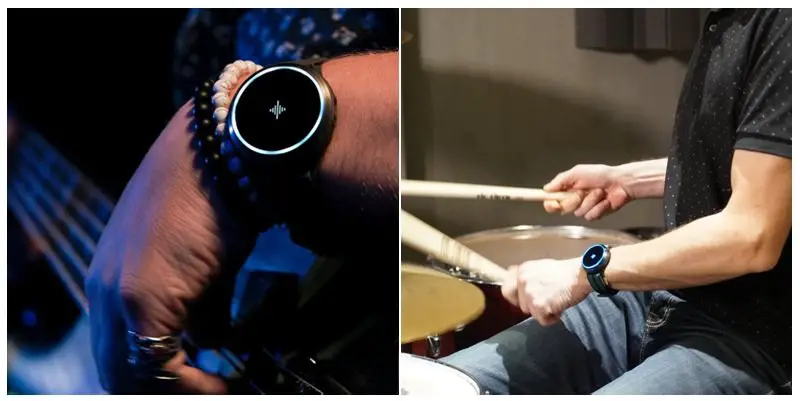
Best Metronomes (reviews), buying guide, and how to use a metronome effectively for piano practice. Whether you’re a music student learning to play a new instrument or a composer, every musician needs to keep perfect time as they work through the pieces. Here we have listed the best metronomes – traditional wind-up models, as well as the modern multifunctional digital devices.
Guide to Metronomes
What is a Metronome?
A metronome is basically a device that produces click sounds at regular intervals that you can set in beats per minute (BPM). Not just beginning students, even experienced musicians use it to practice playing to a regular beat.
The metronome was first invented by Dietrich Nikolaus Winkel in Amsterdam in 1814.
Why use a metronome?
Every music teacher, tutor, and book suggests that beginners should practice playing their instrument (or singing) using a metronome, as it helps to maintain a steady rhythm and will help you play on time if you were to play on backing tracks (accompaniment).

There are several benefits of using a metronome for Piano, Guitar, and Drum students (actually the benefit applies to all music students, including singers).
Use it to Improve Your Playing – Goal Setting
It’s been proven repeatedly that goals need to be specific and measurable to work. If you don’t know exactly WHAT you are trying to achieve, how will you know WHEN you have achieved it?
Say a particular song/exercise has to be played at 160 bpm (beats-per-minute), and it uses lots of sixteenth notes. Now you might be able to play the piece at a slower tempo, but what about playing it at the required speed?
So, you can use the metronome to set SPECIFIC goals for your technique development.
Progressive Realization Of Goals
Metronomes allow you to progressively achieve your goals.
You start learning songs at a lower tempo and GRADUALLY increase the speed of your metronome.
For example, let’s say you want to get a particular lick up to 200 bpm. You could first master the lick at 40 bpm. Once learned at this speed you could then increase the metronome speed to 42 bpm, then 44 bpm, then 46 bpm. You get the idea! You would work up to the target speed incrementally over a period of days, weeks or even months.
Helps Your Focus Better
 With the metronome on, you will realize whether you’re playing on time, or are playing faster or slower.
With the metronome on, you will realize whether you’re playing on time, or are playing faster or slower.
Metronomes really help you focus better in your practice sessions. Most beginners tend to play faster than what is required.
A metronome will help you play at the right speed.
Bestselling Metronomes
When it comes to buying a metronome, you can either buy a classically styled metronome with a wind-up mechanism or you could buy an electronic (digital) metronome that often has a tuner feature as well within the same device. So, it’s now easy to tune your instrument before practice or performance.
Boss DB90 Metronome
Boss DB-90 is ideal for drummers, guitarists and bassists. Its loaded with quality sounds and drum patterns, has built-in mic, an instrument input, a MIDI input and a reference tone (A438 – 445 in 1Hz steps) for tuning.
- Pros: Plays recorded samples of traditional wooden metronome. The traditional metronome pendulum is simulated on the LCD screen
- Cons: Priced in the mid-range of all the options listed here
It also features ‘The Rhythm Coach’, which has four training modes that help build drumming speed, accuracy and endurance. You can use the Rhythm Coach feature with acoustic drums and the built-in mic or plug a Roland V-Pad into the trigger input. Made by Roland, this metronome comes with lots of features.
Boss DB-30 Dr. Beat Metronome
Boss DB-30 is portable and reliable. Features 24 beat variations, 9 rhythm patterns, a great solution for your time-keeping needs.
- Pros: large LCD . Headphone jack with volume control . Play along patterns
- Cons: Could not spot any
Buy on zZounds | Buy on Amazon
Korg TM-60
The Korg TM-60 is a versatile digital metronome with a built-in tuner. It offers the best value for money, so great for students.
It comes with a large backlit screen that is readable even in low light, perfect for use at venues. Use it to keep the tempo while self-learning, and to detect notes of your instrument that are out-of-tune.
Soundbrenner Core
This is a 4-in-1 music tool for musicians. It’s a metronome, chromatic tuner, decibel meter, and also a watch, all in one unit. And it offers you the convenience of wearing it on your wrist.
The main idea behind the device is to have a metronome on the wrist so that you can feel it while playing. This wearable device vibrates up to seven times stronger than a typical smartphone. It can also be worn around the chest or thigh
However, its an intuitive tuner as well. And the built-in decibel meter helps be aware of the sound levels around you. And finally, it’s a watch that lets you see the time.
The only downside is that its an expensive option.
QWIK TIME QT3
QWIK TIME QT3 is an essential practice tool for perfecting your rhythm. It comes with an onboard speaker, and also has an headphone jack to help you play to the beat.
- Pros: Easy to use . Blinking LED . Headphone socket . Low price
- Cons: Click is loud with no volume adjustment . Tempo adjustments via push buttons (dial/wheel would have been better). If you want a dial, Matrix MR600 is a good alternative.
PETERSON BBS-1 BODYBEAT Metronome
The Peterson BBS-1 uses a new concept in metronomes – it vibrates, instead of clicking or flashing lights (both can be distracting to musicians). With the BBS-1 metronome, you literally feel the beat.
Has got on-board speaker, headphone jack for silent practice. You can wirelessly synchronize an unlimited number of performers. Body Beat Sync can be a Master device or synchronized to a group of units.
Attaches to mic or music stand with optional Peterson mounting clamp. Audio, Visual or Tactile delivery modes. 3 different audio choices. Feel or hear a variety of subdivisions and accent patterns.
- Pros: Vibrates. Sturdy. Nice design
- Cons: Expensive
Wittner Taktell Cat Metronome
Wittner Taktell Cat Metronome features a fun cat design and can be used while practicing the piano (or any other instrument). This high-quality metronome features a traditional clockwork pendulum mechanism. It is available in Penguin and Owl designs too!
Made of heavy plastic, the metronome features the same Wittner clockwork pendulum mechanism used in their classic models and are just as reliable and accurate. The metronome is Adjustable from 40-200 beats per minute, you can change the tempo using the clever bowtie weight on the pendulum
- Dimensions: 12.7(W) x 21(H) x 10.2(D) cm. No batteries required
Cats figuring out a metronome (funny)
- Related: Piano playing cats, including Nora
Mobile phone Apps
You can even use your mobile phone as a metronome; just download a metronome and you are good to go. These offer the usual range of features – a variety of time signatures (compound meters), save custom rhythms presets, and ability to keep the metronome going in the background. The Advance version includes additional customization options such as the ability to control the volume of the app independently of the phone’s volume.
Hopefully, this article has inspired you to dust off your metronome and use it during your practice sessions.
KeytarHQ editorial team includes musicians who write and review products for pianists, keyboardists, guitarists & other musicians. KeytarHQ is the best online resource for information on keyboards, pianos, synths, keytars, guitars and music gear for musicians of all abilities, ages and interests.









Leave a Reply